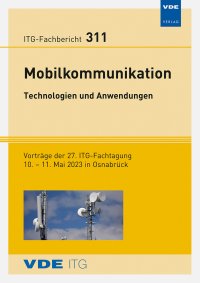Industry 4.0 Security Trust Anchors: Considering Supply Voltage Effects on SRAM-PUF Reliability
Conference: Mobilkommunikation - 27. ITG-Fachtagung
05/10/2023 - 05/11/2023 at Osnabrück
Proceedings: ITG-Fb. 311: Mobilkommunikation – Technologien und Anwendungen
Pages: 7Language: englishTyp: PDF
Authors:
Ahr, Pascal; Reski, Marvin; Lipps, Christoph; Schotten, Hans Dieter (Institute for Wireless Communication and Navigation, RPTU Kaiserslautern-Landau, Kaiserslautern, Germany & Intelligent Networks Research Group, German Research Center for Artificial Intelligence, Kaiserslautern, Germany)
Dreyer, Julian; Toenjes, Ralf (Lab for RF-Technology and Mobile Communications, University of Applied Sciences Osnabrueck, Germany)
Abstract:
The ongoing development towards the Industrial Internet of Things (IIoT) and the industrial metaverse pose several challenges for both, customers and manufacturers. These relate mainly to security, usability and energy consumption of the utilized hardware. As most industrial use-cases are referring on traditional communication scenarios and considering data generated and exchanged between producer and consumers, there is a fundamental need for confidentially, integrity and authenticity within the systems. A worthwhile approach to meeting these requirements are Physically Unclonable Functions (PUFs): Semiconductors, which are - based on nano-scale and uncontrollable imperfections occurring during manufacturing of the microchip - in particular suitable for resource-constrained and lightweight applications. Potential implementations for PUF thereby range from unique device’s fingerprint, to secret key derivation, to seeds for True Random Number Generators (TRNGs). This work proposes another potential application of SRAM-PUFs, specifically as an additional source of entropy for a Password-Based Key Derivation Function (PBKDF) communication scheme. Apart from an evaluation of the proposed concept, the suitability of SRAM cells is demonstrated by a dependence study on the effects of supply voltage fluctuation.


